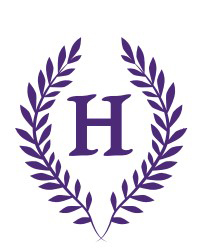Religious Education and Assemblies
Religious Education
Our RE curriculum encourages pupils to adopt a reflective approach through their study of living faiths. Using the Hampshire Agreed Syllabus, Living Difference, we aim to develop the children’s understanding of some of the central issues, questions and experiences which have played a major role in the spiritual life of humankind. Parents have the right to withdraw their children from the RE curriculum but are asked to contact the Headteacher in the first instance. A copy of the Agreed Syllabus may be viewed in school.
Religious Education is taught on PPA afternoons by Mrs Williams or Mrs Stickland and we believe that this dedicated time helps to ensure that this aspect of the curriculum provides many opportunities to support our school aims and values.
Collective Worship (Assembly)
An assembly is held each day, which is broadly Christian but non- denominational in approach. This is an important part of the day, when classes reflect together as a community. Parents have the right to withdraw their child from the Collective Worship (religious) element of assembly and, again, are asked to contact the Headteacher to arrange this. Wednesdays is our singing assembly whilst on other days children may have assembly in class or together in the hall led by a member of staff. Fridays are our Celebration Assemblies
Religious Education Curriculum Statement
INTENT
At Heatherside Junior School we follow Living Difference IV, which is the agreed syllabus for religious Education (RE) in Hampshire. As children work through each unit of work the key skills are taught, used and applied. The key skills of religious education are the enquiry skills of communicate, apply, inquire, contextualise and evaluate. Children will spend four years looking at aspects of Christianity, while they are in Year 3 and 4 they will look at Judaism and in 5 and 6 they will learn some key fundamentals about Islam.
We give children the opportunity to share personal experiences and ask questions all while being respectful to others who may have different beliefs to their own. They learn how the world may be viewed in different ways according the religious beliefs an individual may hold.
IMPLEMENTATION
- Planning is completed following the structure given by Living difference Curriculum IV and resources from HIAS. (Hampshire Inspection and Advice Service)
- Through a clear teaching cycle, children understand the key skill/s of the lesson.
- They use their own knowledge and understanding of concepts as a starting point and then learn what the concept means in a religious sense. Time is dedicated to reflecting and evaluating what has been learnt.
- In year 3 and 4 the emphasis is on ‘describe…’ and in year 5 and 6 the emphasis is ‘explain…’ Learning Intentions are worded to support and encourage this.
- A range of different resources are used to capture the children’s interest, including, Active Inspire notebook, short video clips, animations of bible stories, first hand experiences shared by their peers, photographs and other artefacts.
- Children will see stories come alive by taking part in drama activities such as role play and freeze frame.
IMPACT
Children at Heatherside Junior school will be inquisitive learners who are keen to ask questions and share experiences. They listen carefully and respectively to others and understand that people may hold different beliefs to their own. They are able to confidently talk about some of the main beliefs held by the religions we have covered in school.
